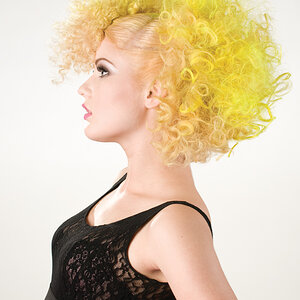I have just started getting really serious about photography and I'm having a hard time finding someone to do my prints the way I want. Should I a good photo program and touch them up myself? If so, what do I do about printing? ANY suggestions would help as I am quite the amateur.
Navigation
Install the app
How to install the app on iOS
Follow along with the video below to see how to install our site as a web app on your home screen.

Note: This feature currently requires accessing the site using the built-in Safari browser.
More options
You are using an out of date browser. It may not display this or other websites correctly.
You should upgrade or use an alternative browser.
You should upgrade or use an alternative browser.
printing question
- Thread starter kornelius
- Start date
Well, over the years i've done alot of b&w and have just started to experiment with color slide film. I have a canon t90 and pentax 645 medium format however I don't know any of the photography "lingo"... so I don't know what you are talking about... please explain if you could.
ksmattfish
Now 100% DC - not as cool as I once was, but still
- Joined
- Aug 25, 2003
- Messages
- 7,019
- Reaction score
- 36
- Location
- Lawrence, KS
- Website
- www.henrypeach.com
- Can others edit my Photos
- Photos NOT OK to edit
A good slide scanner, Adobe PS, and a good Epson printer and the world will be your oyster.
markc
TPF Noob!
- Joined
- Mar 8, 2004
- Messages
- 4,237
- Reaction score
- 6
- Location
- Rochester, NY Velocity: Unknown
- Website
- www.markcarpenter.com
- Can others edit my Photos
- Photos NOT OK to edit
If you get good ones, I dare say even better. Plus you have a lot more control over how you want them to look. Prints from inkjets have a wider dynamic range than what photo paper is capable of, and the resolution issue has been solved. Longevity was a problem, but the good printers seem to not have a problem with that any more.kornelius said:by investing in a good scanner and printer i'll get the type of prints i would get at a lab?
My current dedicated B&W printing set-up produces prints that rival a high-quality fiber print, at least from the tech standpoint.
- Joined
- Sep 2, 2003
- Messages
- 34,516
- Reaction score
- 7,544
- Location
- In the mental ward of this forum
- Can others edit my Photos
- Photos NOT OK to edit
Well....it will still be an inkjet print, whether you have a printer with pigment-based inks (more archival) or not. So you will be limited with anything you may want to do AFTERWARDS with that print. Selenium or split toning, etc.
I agree it's become more an archival issue these days than anything. I'm a big fan of my Epson 2200, but even as I marvel over the quality of the prints it gives me....I know it's not a silver gelatin print, and that just lessens its ultimate quality in my eyes.
But that's just me. :mrgreen:
I agree it's become more an archival issue these days than anything. I'm a big fan of my Epson 2200, but even as I marvel over the quality of the prints it gives me....I know it's not a silver gelatin print, and that just lessens its ultimate quality in my eyes.
But that's just me. :mrgreen:
markc
TPF Noob!
- Joined
- Mar 8, 2004
- Messages
- 4,237
- Reaction score
- 6
- Location
- Rochester, NY Velocity: Unknown
- Website
- www.markcarpenter.com
- Can others edit my Photos
- Photos NOT OK to edit
True, but toning can be done at the time of the print. It may not look exactly the same as a traditional chemical process, but some can be very, very close.terri said:So you will be limited with anything you may want to do AFTERWARDS with that print. Selenium or split toning, etc.
I can understand that. Since people usually don't have an issue with high-quality digital prints until they find out they are digital, I think it's mostly in people's heads. But that's where all perception of quality is anyway.but even as I marvel over the quality of the prints it gives me....I know it's not a silver gelatin print, and that just lessens its ultimate quality in my eyes.
But that's just me. :mrgreen:
People had a similar reaction to color when it came out. Anything new is by definition different, and it can take a while for people to adjust.
Heck, if given a choice between a digital print and a traditional one, both of the same image quality, I'd still rather have the traditional one, same as you. I think it's for a similar reason that I like old cameras. It's not a quality issue, it's about some sense of old-time "magic" that seems to float around them.
- Joined
- Sep 2, 2003
- Messages
- 34,516
- Reaction score
- 7,544
- Location
- In the mental ward of this forum
- Can others edit my Photos
- Photos NOT OK to edit
True, but toning can be done at the time of the print. It may not look exactly the same as a traditional chemical process, but some can be very, very close.
I've seen darn few that rival anything that came out of a real toning bath, but I'd have to agree some can come close. SOME.
And I freely admit it will take me a long time to value the inkjet print as much as the silver gelatin. This from somebody who is at the mercy of other darkroom geeks to print her stuff, but can comfortably print out a dandy-looking inkjet print. It's *possibly* just all in my head (the quality issue) BUT until we've reached those golden 50-75-100+ year marks, we can't possibly judge the archival qualities of these printers or the papers - it's just our best guess, based on studies by the good people at Wilhelm Imaging Research.
markc
TPF Noob!
- Joined
- Mar 8, 2004
- Messages
- 4,237
- Reaction score
- 6
- Location
- Rochester, NY Velocity: Unknown
- Website
- www.markcarpenter.com
- Can others edit my Photos
- Photos NOT OK to edit
Yeah, I know. We're not talking about something from a 1280.terri said:I've seen darn few that rival anything that came out of a real toning bath, but I'd have to agree some can come close. SOME.
Yeah, I meant other aspects. Archivability still remains a big question mark, and they've been wrong before (Epson 1270). I still don't trust the dye inks. At least pigments have a long history of known reliability, even if not used in this way before.It's *possibly* just all in my head (the quality issue) BUT until we've reached those golden 50-75-100+ year marks, we can't possibly judge the archival qualities of these printers or the papers - it's just our best guess, based on studies by the good people at Wilhelm Imaging Research.
- Joined
- Sep 2, 2003
- Messages
- 34,516
- Reaction score
- 7,544
- Location
- In the mental ward of this forum
- Can others edit my Photos
- Photos NOT OK to edit
markc
TPF Noob!
- Joined
- Mar 8, 2004
- Messages
- 4,237
- Reaction score
- 6
- Location
- Rochester, NY Velocity: Unknown
- Website
- www.markcarpenter.com
- Can others edit my Photos
- Photos NOT OK to edit
Hehe. I haven't looked into color printing much recently, but from what I've seen, that's currently the way to go. For B&W, there are special ink-sets you can get that do a really good job of emulating sepia and selenium toning, but if you pick sepia, all prints make by that ink are sepia.terri said:
That reminds me, I need to finish that B&W digital printing thread I started.
ksmattfish
Now 100% DC - not as cool as I once was, but still
- Joined
- Aug 25, 2003
- Messages
- 7,019
- Reaction score
- 36
- Location
- Lawrence, KS
- Website
- www.henrypeach.com
- Can others edit my Photos
- Photos NOT OK to edit
I'll stick to the traditional darkroom for BW, because I love gelatin silver prints, but as far as color printing goes I'm all for digital.
Most reactions
-
 432
432 -
 289
289 -
 285
285 -
 272
272 -
 221
221 -
 203
203 -
 185
185 -
 178
178 -
 167
167 -
 166
166 -
 148
148 -
 134
134 -
 120
120 -
 95
95 -
I
94
Similar threads
- Replies
- 0
- Views
- 162
- Replies
- 4
- Views
- 219


![[No title]](/data/xfmg/thumbnail/30/30879-16ad830465e571dee0a784c7fa122909.jpg?1619734493)
![[No title]](/data/xfmg/thumbnail/35/35880-9a6926237907ab72b42781d9a09698a6.jpg?1619737209)



![[No title]](/data/xfmg/thumbnail/38/38732-8364f5190d3f325e8ee02d23404a610c.jpg?1619738703)
![[No title]](/data/xfmg/thumbnail/35/35878-753a9d58c095f0e1aaa96d03c025f6ce.jpg?1619737205)




![[No title]](/data/xfmg/thumbnail/38/38735-2245cc1b04db3f96fa74095ae14558a6.jpg?1619738703)